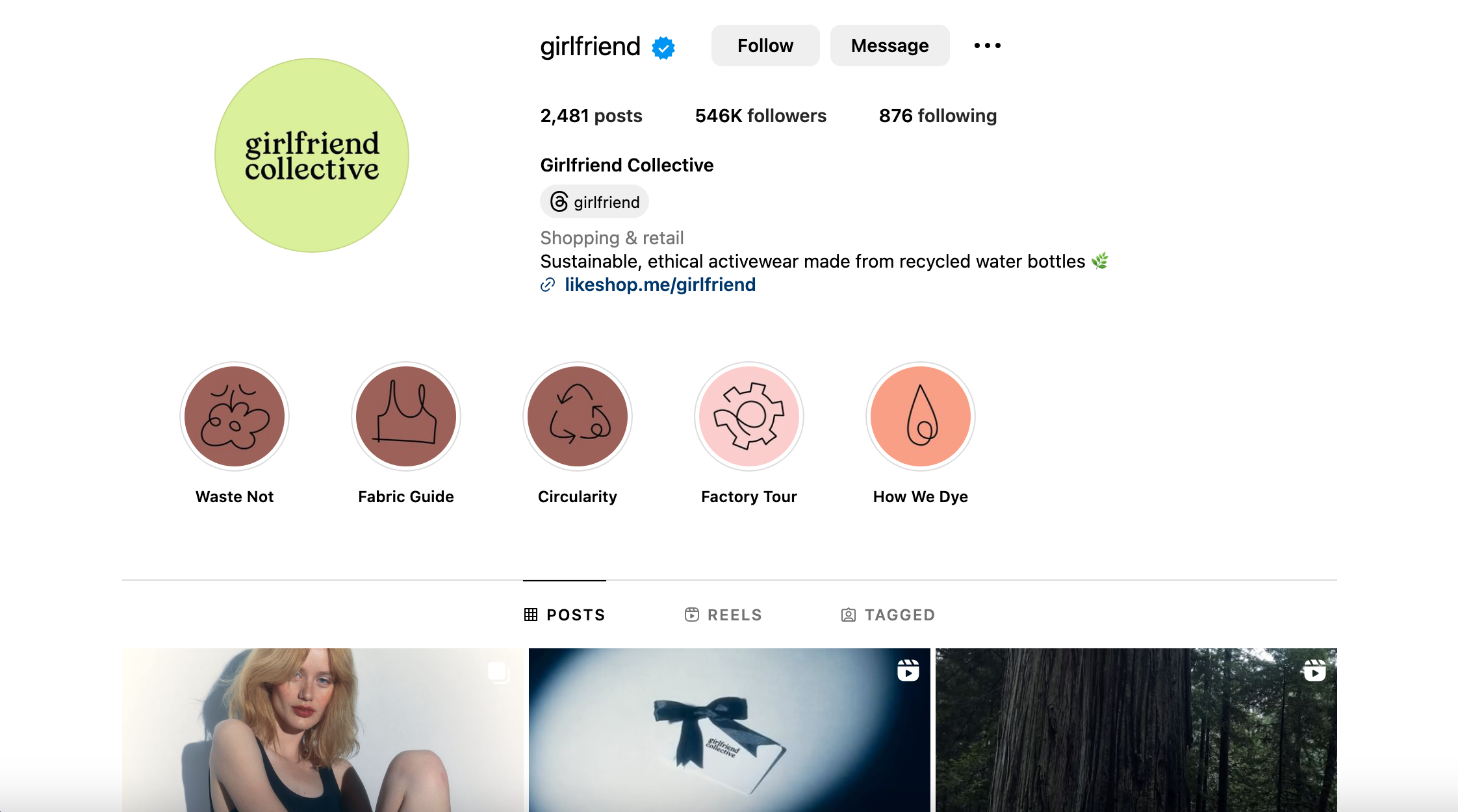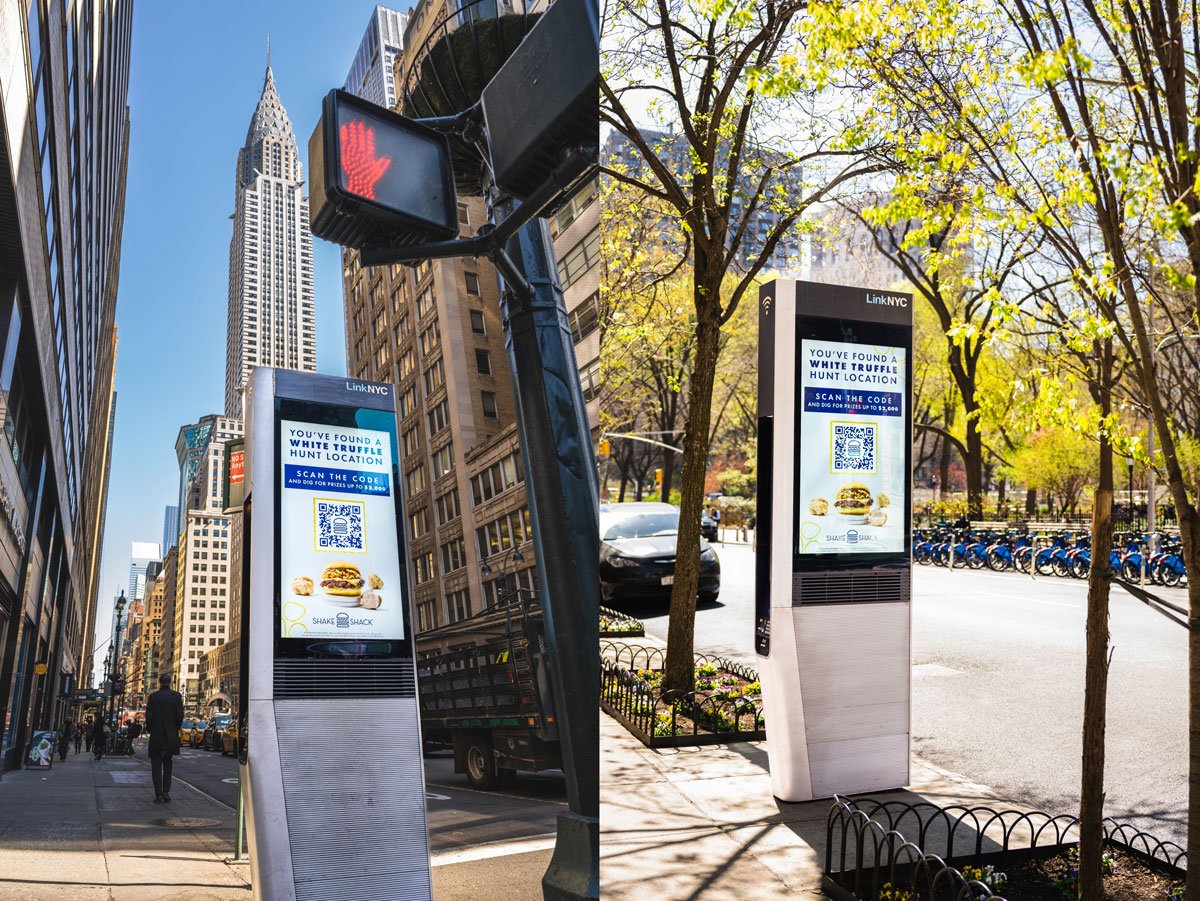Engagement der Marke
Was ist Markenbindung?
Unter Markenbindung versteht man den Aufbau von Bindungen zwischen Verbrauchern und Marken. Diese Bindung kann emotional oder rational sein und führt im Idealfall zu einer langfristigen Markentreue. Das festigt die Marke und trägt dazu bei, das Erlebnis für den Kunden zu verbessern.
Es gibt zwei Arten von Markenbindung:
- Interne Markenbindung entsteht zwischen Mitarbeitern oder anderen engen Stakeholdern und einer Marke.
- Externes Brand Engagement findet zwischen öffentlichen Verbrauchern und einer Marke statt und wird auch als Markenbekanntheit bezeichnet.
Customer Engagement steht eine Stufe über der Markeninteraktion, die immer dann stattfindet, wenn ein Kunde eine Aktion durchführt, z. B. wenn er der Marke in den sozialen Medien folgt, sich für ein Webinar anmeldet oder ein Produkt in seinen Warenkorb legt.
Unterscheidung zwischen internem und externem Markenengagement
Es gibt zwei Arten von Markenbindung. Beide wirken sich unterschiedlich auf dein Unternehmen und deine Marke aus, aber beide sind wichtig, um eine kohärente, wahrheitsgemäße Markengeschichte zu entwickeln.
Interne Markenbindung
Hast du schon einmal an einer Firmenveranstaltung teilgenommen, Werbegeschenke erhalten oder an "Teambuilding"-Übungen teilgenommen?
Das waren alles Mechanismen der internen Markenbindung.
Bei der Markenbindung geht es nicht nur um das Marketing für potenzielle Kunden; um erfolgreich zu sein, müssen Marken ihre Marketingbemühungen auch innerhalb ihres Unternehmens fortsetzen.
Internes Markenengagement bezieht sich auf die Verbundenheit von Mitarbeitern, Investoren, Partnern, Lieferanten, Zwischenhändlern oder anderen Interessengruppen mit einer Marke. Sie geht Hand in Hand mit der Entwicklung der Unternehmenskultur und trägt dazu bei, dass sich alle Beteiligten an der erklärten Mission oder den Unternehmenszielen orientieren.
Eine gut entwickelte Marke wirkt sich auf das gesamte Unternehmen aus und bringt viele Vorteile mit sich. Interne Markenbindung:
- Verbessert die Leistung und Bindung der Mitarbeiter/innen
- Schafft eine kohärente Unternehmenskultur
- Die Organisation konzentriert sich auf ihre Ziele und Werte
- Baut eine Gemeinschaft auf
- Entwickelt die Erzählung des Unternehmens
Diese Aspekte sind nicht nur für deine Teams und dein Unternehmen wichtig. Die Wahrnehmung deiner Marke in der Öffentlichkeit, also auch die Frage, ob sie ein guter Arbeitsplatz ist, ist ein wichtiger Bestandteil von Markenerlebnissen.
Externes Markenengagement
Die meisten Menschen denken bei dem Begriff Markenbindung an externe Markenbindung. Dabei geht es um die Interaktionen, die deine Kunden mit deiner Marke haben und die eine emotionale Bindung und Loyalität fördern.
Wenn Menschen mit deiner Marke in Berührung kommen, engagieren sie sich an sogenannten "Touchpoints" mit deiner Marke. Das sind einfach Gelegenheiten zur Interaktion. Einige gängige Touchpoints sind:
- Website
- Präsenz in den sozialen Medien
- Physischer Laden
- Werbung in der Öffentlichkeit
- Online-Bewertungen
- Mundpropaganda von anderen
Als Vermarkter identifizieren wir diese Touchpoints und suchen nach Möglichkeiten, die Kundenbeziehungen zu stärken, indem wir eine Abbildung der Customer Journey erstellen. Brand Engagement entsteht, wenn du die Touchpoints so gestaltest, dass sie die Interaktion deiner Kunden mit deiner Marke verbessern.
Wie man Markenbindung misst
Wenn du dein Markendenken an allen Touchpoints misst, kannst du klügere Entscheidungen treffen und deine Markenstrategie überarbeiten. Aber was sind die besten Messgrößen?
Es gibt einige wichtige Indikatoren, die zeigen, dass deine Markenstrategie zur Markentreue führt. Dazu gehören:
- Wachstum der Suchanfragen nach markenbezogenen Keywords: Sind die Kunden über dich gestolpert oder haben sie direkt nach dir gesucht? Ein Anstieg bei beiden Ergebnissen signalisiert Wachstum, aber die direkte Suche nach deiner Marke oder deinem Produkt zeigt, dass deine Gesamtstrategie in die richtige Richtung geht, was die Kundenbindung und -zufriedenheit angeht.
- Zunahme des Empfehlungsverkehrs: Egal, ob sie über eine Review Site, Content Creators oder ein Freundschaftswerbungsprogramm kommen, ein Anstieg dieses Traffics bedeutet, dass dein Markenengagement zum Gewinn deines Unternehmens beiträgt. Außerdem sind Empfehlungskunden um 18 % loyaler, geben 13 % mehr aus und haben einen um 16 % höheren Lebenszeitwert als andere Kundentypen.
- Stabiles oder wachsendes Mitarbeiterengagement: Das Mitarbeiterengagement wird in der Regel von deiner Personalabteilung oder deinem People Operations Team verwaltet. Sie verfolgen regelmäßig Kennzahlen wie Fluktuation, Mitarbeiterbindung, Fehlzeiten, Beförderungen und mehr. Warum sind diese Daten für Markenvermarkter so wichtig? Im Jahr 2019 hat Glassdoor herausgefunden, dass ein Anstieg der Mitarbeitererfahrungswerte um nur einen Punkt zu einem Anstieg der Kundenzufriedenheit um 1,3 Punkte führen kann.
Beispiele für Markenengagement in der Praxis
Es gibt viele Möglichkeiten der Markeneinbindung, aber hier sind die häufigsten Taktiken, die Marketer auf dem Weg zur Markentreue einsetzen:
Social Media Marketing
Etwa 90 Prozent der Menschen kaufen von Unternehmen, denen sie auch in den sozialen Medien folgen. Das macht sie zu einem der besten Orte, um Kampagnen zur Markenbindung zu starten, um dein Publikum anzuziehen und zu halten, besonders jetzt, wo du direkt auf Instagram, TikTok, Snap und Facebook einkaufen kannst.
Jede Social-Media-Plattform (sogar LinkedIn) kann genutzt werden, um das Engagement deiner Marke zu verbessern. Ziehe in Erwägung, eine oder mehrere der folgenden Taktiken zur Markenbindung auszuprobieren:
- Werbegeschenke und Promos
- Einzigartige Hashtags, um User-Generated Content zu sammeln
- Posting von Fragen, Quizzen oder Dingen, die zu Diskussionen anregen
Das Beste an Social Media Brand Engagement ist, dass du mit einer kristallklaren Markenbotschaft und einer kreativen Vision den Durchbruch schaffen kannst.
Girlfriend Collective, eine Athleisure-Marke, ist ein gutes Beispiel für die Möglichkeiten, die diese Kanäle bieten. Obwohl der neue Marktteilnehmer mit Giganten wie Nike und Marken mit einer großen Fangemeinde wie Lululemon konkurriert, hat Girlfriend Collective den Durchbruch geschafft und ist heute eine der beliebtesten Fitnessmarken auf TikTok.
Einige der Taktiken, die sie zum Erfolg geführt haben:
- Mit einer kostenlosen Leggings-Kampagne, bei der Early Adopter nur für den Versand zahlen mussten, wagten sie den Sprung ins kalte Wasser (ein frühes Glücksspiel, das sich ausgezahlt hat).
- Aufbau eines Marktplatzes für den Kauf und Verkauf bereits getragener Modelle
- Das Teilen von vertrauenswürdigen, lehrreichen Inhalten, die von der Zielgruppe erneut gepostet wurden

Schöpferisches Marketing
Wie hast du die letzten fünf Marken gefunden, die du entdeckt hast? Die Wahrscheinlichkeit ist groß, dass dir mindestens eine von ihnen von einem Content Creator oder einem Influencer empfohlen wurde.
Creator Marketing ist sogar noch größer, als du dir vorstellen kannst. Ein paar kurze Zahlen:
- Der globale Influencer-Markt erreicht 2023 ein Volumen von 21 Mrd. US-Dollar
- 162 Millionen Amateur-Content-Creators sind derzeit in Aktion
- 46,7 % von ihnen bezeichnen sich als Vollzeit-Inhaltsersteller
Content Creators (die richtigen) können zum Mittelpunkt von Online-Markengemeinschaften werden und sowohl bei der Produktion als auch bei der Interaktion mit dem Kundenstamm die Hauptarbeit leisten.
Während ein Teil des Creator-Marketings darin besteht, Marketingbudgets für Influencer und Content Creators mit persönlicher Reichweite bereitzustellen, darfst du auch die Amateur-Creators nicht vernachlässigen, die sich gerne kreativ betätigen.
Nicht überzeugt? Die Kampagne "The Party Never Stops" des britischen Modehändlers FLANNELS brachte 3,68 Millionen Pfund Umsatz und eine 18-fache Rendite auf ihre Werbeausgaben.
Wie haben sie das geschafft? Mit einer Kombination aus bezahltem und kreativem Marketing beauftragte FLANNELS TikTok-First-Creators mit insgesamt 3 Millionen Followern, jeweils zwei Videos mit den 15 Fotos des Trends zu produzieren, wobei das zweite Video mit dem Konto der Marke FLANNELS verlinkt wurde.
Rabattcodes und Gutscheine
Jeder liebt es, Geld zu sparen. Rabatte, Coupons und Gutscheine sind ein einfacher Weg, um Kunden zum Einkaufen zu bewegen und das Customer Engagement zu erhöhen.
Einige Untersuchungen zeigen, dass Kunden Marken, die bereitwillig Rabatte gewähren, treuer sind. Das liegt daran, dass Gutscheine und Rabatte darauf hindeuten, dass du das Beste für deine Kunden im Sinn hast und nicht nur deinen Gewinn. Gelegenheiten für Rabatte oder Gutscheine sind unter anderem:
- Wenn du dich für einen Newsletter oder ein Treueprogramm anmeldest oder einen Fragebogen erstellst
- Geburtstage, Jahrestage oder besondere Tage
- Beim Erreichen einer bestimmten Ausgabenschwelle
Interaktive Werbung
Wir sind es gewohnt, Werbung als einseitige Kommunikation zu betrachten, aber das muss nicht sein. Von cleveren Anzeigen, die den Betrachter zu einer Aktivität auffordern, bis hin zu interaktiven Displays, die den Inhalt dynamisch halten, hast du die Möglichkeit, schon bei der ersten Berührung das Engagement für deine Marke zu fördern.
Beschilderungen, Anzeigen und ähnliche Materialien können mit ein paar einfachen, aber cleveren Methoden zu Trägern der Markenbindung werden. Denke darüber nach:
- Erstelle Quizze, die den Geist und die Neugierde anregen.
- Aufforderung an die Betrachter/innen, an einer Schnitzeljagd teilzunehmen, die sie in einen physischen Laden führt.
- Eine starke Reaktion wie Lachen oder Wut hervorrufen, um eine emotionale Bindung aufzubauen.
Ein Beispiel für Interaktivität in großem Maßstab ist die New Yorker Trüffeljagd-Kampagne von Shake Shack vom April 2023.
Eine "immersive Out-of-Home (OOH)"-Kampagne führte Shake Shack-Liebhaber auf eine Schnitzeljagd durch New York City. Auf 500 digitalen Plakatwänden mit weißen Trüffeln in der ganzen Stadt konnte man durch kurzes Scannen des QR-Codes Promo-Codes und sogar 2.000 Dollar gewinnen.

Live-Events
Richtig eingesetzt, können Live-Events das Markenengagement drastisch verbessern. Sie schaffen nicht nur ein Gefühl der Exklusivität, indem sie die Menschen dazu zwingen, zu einer bestimmten Zeit an einem bestimmten Ort zu sein, sondern Live-Events sind auch eine großartige Möglichkeit, einen menschlichen Kontakt zu deinen Kunden aufzubauen. Rund 77 Prozent der Vermarkter/innen nutzen sie aus diesem Grund immer noch als Kernstück ihrer Digitalstrategie.
Im Jahr 2021 müssen Live-Events keine physischen Veranstaltungen sein - obwohl sie das sein können. Virtuelle Veranstaltungen spiegeln nicht nur das Engagement für soziale Verantwortung wider, sondern sind auch eine großartige Möglichkeit, die Reichweite deiner Marke über das hinaus zu erhöhen, was in deinem Ort möglich ist. Einige Beispiele für Live-Events, die das Engagement deiner Marke fördern, sind:
- Webinare oder Webkonferenzen
- Auktionen, Abendessen oder Spendenaktionen für wohltätige Zwecke
- Live-Demos oder Online-Shopping in Echtzeit in einem Geschäft - vor allem solche, die von Menschen geführt werden
5 Erfolgsmethoden(n) zur Verbesserung der Markenbindung
Markenbindung ist ein wichtiger Teil der Markenführung. Wenn du es richtig machst, kannst du deine Marke ausbauen, neue Zielgruppen erreichen und deinen Mitarbeitern oder Kunden bessere Erlebnisse bieten.
Es gibt jedoch ein paar Dinge, die du beachten musst. Vergewissere dich:
- Zeichne die Customer Journey oder die Employee Journey auf. Wenn du genau weißt, welchen Weg deine Nutzerinnen und Nutzer zurücklegen, wenn sie deine Marke betreten, kannst du sie optimieren. Du wirst auch Touchpoints erkennen, von denen einige vielleicht einzigartig für dein Unternehmen sind.
- Lege deine Messgrößen im Voraus fest. Du musst wissen, was du verfolgen musst, um den Erfolg zu messen, und du brauchst eine Strategie, um diese Daten zu sammeln.
- Beobachte Verhaltensweisen in Echtzeit. Indem du auf Echtzeitbeobachtung setzt, bleibst du sensibel für sich ändernde Markt- oder Verbraucheranforderungen. So kannst du das Erlebnis schneller optimieren.
- Personalisiere so viel wie möglich. Wusstest du, dass sich 80 Prozent der Kunden ein personalisiertes Einkaufserlebnis wünschen? Personalisieren erhöht auch das Engagement der Mitarbeiter/innen um bis zu 30 Prozent.
- Verbessere dein internes und externes Markenengagement gemeinsam. Konzentriere dich nicht auf das eine und vergiss das andere. Eine erfolgreiche Marke ist ein attraktiver Arbeitgeber und engagierte Mitarbeiter tragen zum Erfolg deiner Marke bei.
Bist du bereit, tiefer einzutauchen? Unter Die Kunst und Wissenschaft der Verbesserung des Kundenerlebnisses erfährst du mehr darüber, wie deine Daten zum Markenengagement zu einem erstklassigen Kundenerlebnis beitragen können.